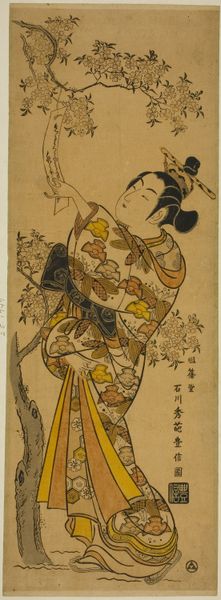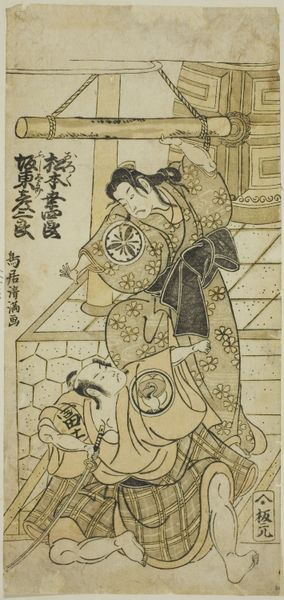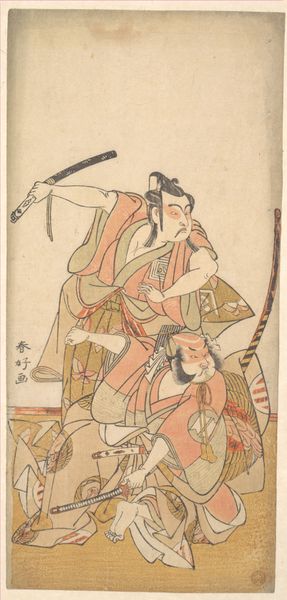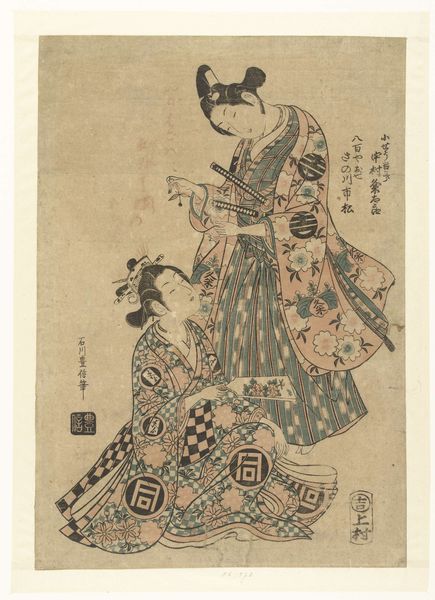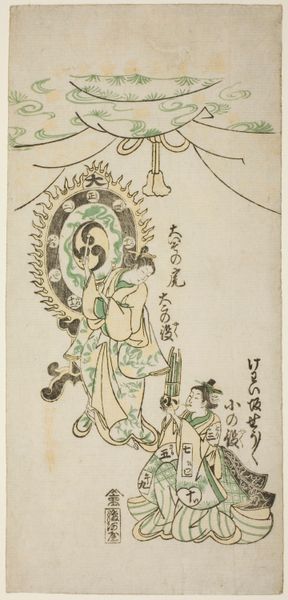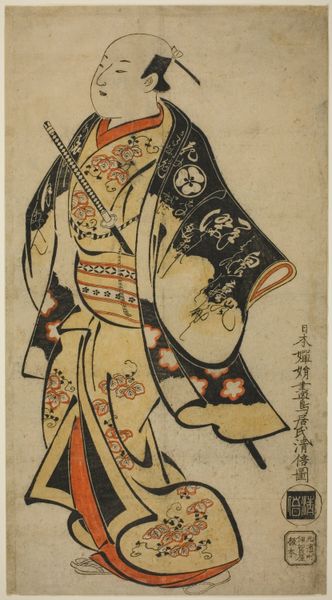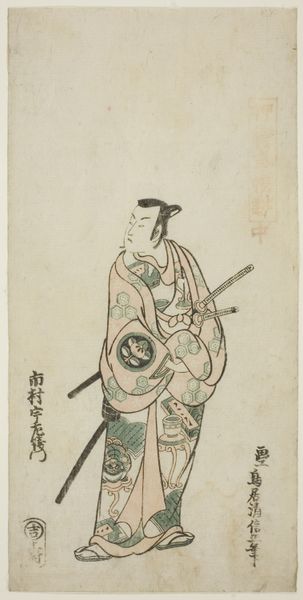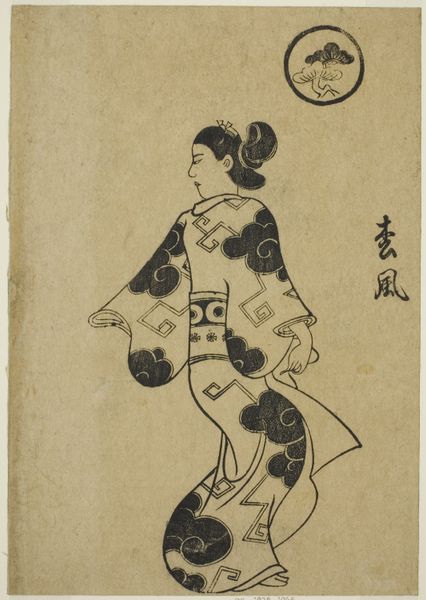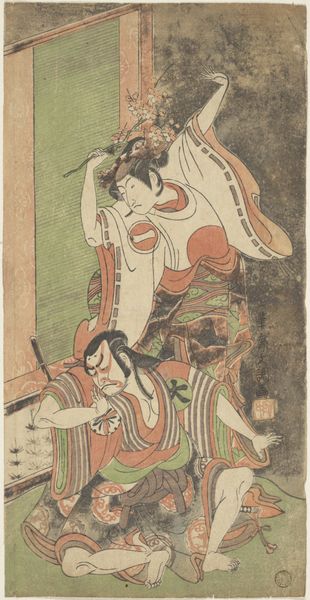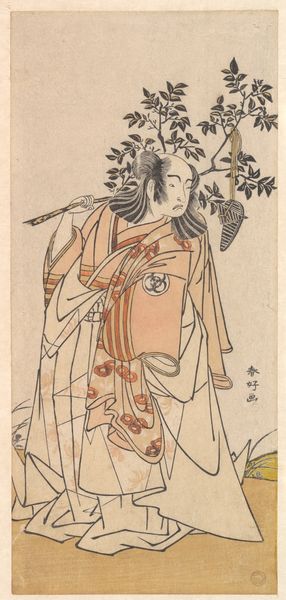
print, ink, woodcut
#
portrait
#
ink drawing
# print
#
asian-art
#
ukiyo-e
#
japan
#
figuration
#
ink
#
woodcut
#
line
#
calligraphy
Dimensions: 10 3/8 x 7 3/16 in. (26.4 x 18.3 cm) (image, sheet)17 15/16 x 14 in. (45.5 x 35.5 cm) (mat, Size I)
Copyright: Public Domain
Editor: This woodblock print titled "-Wakoku-" created around 1701 by Okumura Masanobu, features a woman adorned with crows, set against a backdrop of seemingly indoor scenes. It strikes me as a study in contrasts, with flat planes punctuated by dynamic lines. What compositional elements stand out to you? Curator: Immediately, I observe the stark linearity, an aesthetic choice simplifying form into essential outlines. The composition is deliberately flat; there's little attempt at depth. Note the symbolic arrangement—the placement of the crows, the crest above, the calligraphic elements. Editor: How do those pictorial elements contribute to the print's aesthetic value? Curator: Consider the use of positive and negative space, with dense blacks playing against the blank paper. The artist utilizes the contrast as a focal point. Moreover, consider the calligraphic inscriptions; their linearity echoes the woodblock's carved nature and functions as both text and pure design. Ask yourself, how do these graphic components influence our understanding of the figure within the frame? Editor: It seems less about depicting a realistic scene and more about creating a striking visual pattern. The limited palette reinforces that idea. It makes me wonder about the relationship between line and form in ukiyo-e prints. Curator: Precisely. We could deconstruct this piece through a semiotic lens: lines becoming signs, directing the viewer to interpret narrative. Observe, too, the deliberate distortion. The body is flattened and elongated. Line isn't used to define realistic depth, but to create shapes—vectors to guide the eye across the print's surface. Editor: So, focusing on how Masanobu manipulates these formal qualities offers a pathway into the artwork’s meaning, almost like a visual puzzle! Curator: Indeed, appreciating how these graphic elements interact on a formal level allows us insight into the piece's artistic intention and effectiveness. We move beyond surface level engagement into true aesthetic understanding.
Comments
minneapolisinstituteofart about 2 years ago
⋮
This print is a page from a two-volume book illustrating popular prostitutes in the city of Edo (present-day Tokyo). The woman's name "Wakoku" is inscribed near the right margin. Her crest, a butterfly within a floral medallion, further confirms her identity. Highly educated and cultured, ranking prostitutes were fashion leaders in the 18th and 19th centuries. Although the dramatic fashions sported by these exotic women were not readily adopted by the general populace, they did have an effect on fashion trends. The bold patterns shown here on Wakoku's kimono and sash reflect the style that came into vogue at the beginning of the 18th century.
Join the conversation
Join millions of artists and users on Artera today and experience the ultimate creative platform.
